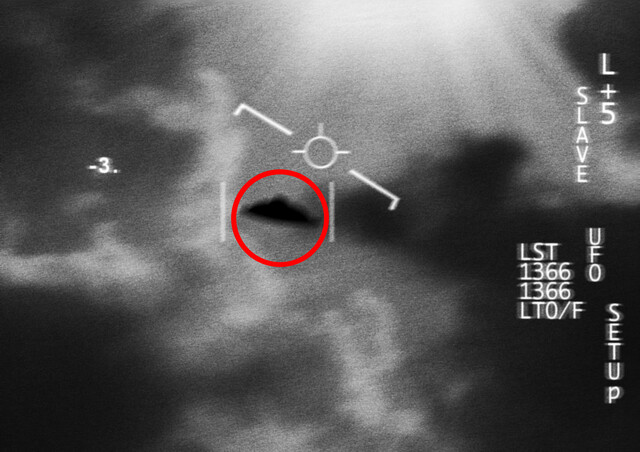Online Class: ABCs of Geometry

no certificate
with CEU Certificate*
-
15Lessons
-
30Exams &
Assignments -
8Hours
average time -
0.8CEUs
Course Description
Mastering Geometry: Deciphering the Language of Shapes and Spaces
Geometry, the branch of mathematics that explores the nuances of shapes and spaces, is not just confined to textbooks. It permeates our daily life, influencing everything from architectural marvels to intricate art patterns. This course is designed to immerse learners into the dynamic world of geometry, helping them not only understand its core concepts but also appreciate its ubiquitous presence in our surroundings.
Course Essence
Spanning a meticulously crafted curriculum, this course aims to transcend beyond theoretical knowledge. Through engaging readings, interactive lessons, challenging quizzes, and avenues for independent exploration, students are facilitated to develop a holistic understanding of geometry. Furthermore, an array of curated websites will augment the learning experience, allowing students to delve deeper into specific topics at their own pace.
By the culmination of this course, students will possess a robust foundation in geometric principles, enabling them to decipher the world through a geometrical lens. They will hone the ability to:
-
Perceive Geometry's Daily Implications: Recognize how geometry seamlessly integrates into various professions, the universe, our homes, and even the synthetic constructs of our world.
-
Identify Geometric Figures: From basic shapes like triangles and rectangles to more complex forms such as kites and prisms, students will become adept at naming and visualizing a plethora of figures.
-
Analyze Properties of Shapes: Delving deeper, students will discern the intricate properties that define each shape - right angles, parallel sides, number of corners, and more.
-
Establish Relationships Between Figures: Develop the acumen to deduce relationships between different shapes. For instance, understanding how every rectangle is essentially a parallelogram characterized by a right angle.
-
Adopt a Deductive Geometric Mindset: Progressing through the Van Hiele levels of geometric thought, students will cultivate the skill to reason and deduce geometric concepts, paving the way for rigorous proofs.
Course Roadmap
-
Lesson 1 - Geometry in Our World: Initiating the journey by illuminating the omnipresence of geometry in our surroundings.
-
Lesson 2 - Learning All About Shapes: An extensive exploration of various geometric figures and their distinguishing features.
-
Lesson 3 - Tessellations: Discover the mesmerizing patterns formed by repeating shapes without any overlaps or gaps.
-
Lesson 4 - Symmetry: Dive into the world of balanced proportions and understand the harmony in geometric figures.
-
Lesson 5 - Pentominoes: Venture into the realm of geometric puzzles and their intriguing configurations.
-
Lesson 6 - Three Dimensional Shapes: Elevate the learning from 2D to 3D, unraveling the complexities of spatial figures.
-
Lesson 7 - Perimeter: Grasp the concept of boundaries and their measurements.
-
Lesson 8 - Area: Delve into the space enclosed within geometric boundaries.
-
Lesson 9 - If-Then Statements: Master the foundational logic statements pivotal for geometric proofs.
-
Lesson 10 - Area of Three-Dimensional Objects: Measure the space occupied by 3D entities.
-
Lesson 11 - Translations, Reflections, Rotations: Understand the transformative actions that can alter a shape's position or orientation without changing its form.
-
Lesson 12 - Classifying Shapes by Properties: Learn to categorize shapes based on inherent characteristics.
-
Lesson 13 - Proofs and Abstract Thinking in Geometry: Harness abstract thought processes to validate geometric concepts.
-
Lesson 14 - Geometry in Our Universe: Marvel at how the cosmos is a magnificent testament to geometric principles.
-
Lesson 15 - Geometry in Professions: Realize the indispensable role of geometry in various vocations, from architecture to design.
Steer Your Curiosity into Mastery
Geometry is more than a subject; it's a lens to perceive the intricacies of our world. Whether you're a student aiming for academic excellence, an enthusiast curious about the world's designs, or a professional seeking to integrate geometric principles into your work, this course promises to be an enlightening experience. Unveil the secrets of shapes and spaces and recognize the symphony of geometry echoing throughout our universe.
- Completely Online
- Self-Paced
- Printable Lessons
- Full HD Video

- 6 Months to Complete
- 24/7 Availability
- Start Anytime
- PC & Mac Compatible
- Android & iOS Friendly
- Accredited CEUs

Course Lessons
Lesson 1. Geometry Unveiled: Everyday Angles and Structures
From infants recognizing shapes to architects shaping skylines, geometry is a fundamental constant in our environment. Lines, angles, and patterns shape our world, offering not only aesthetic appeal but also functionality and structural integrity.Lesson 2. Exploring the World of Shapes: A Comprehensive Introduction to Geometry
Geometry starts with identifying shapes like squares and circles, which differ in linearity and angularity, and uses classification to uncover common geometric principles. Understanding prefixes enhances the ability to identify and derive insights about various polygons and their properties.Lesson 3. Understanding Tessellations
Patterns such as AB and ABC are fundamental in understanding repetitions of shapes and colors. Tessellations use closed, non-overlapping shapes to cover surfaces fully, seen in examples like mosaic pictures, with vital angles adding up to 360 degrees.Lesson 4. Balancing Beauty: The Role of Symmetry in Design and Nature
In geometry, symmetry refers to the condition wherein a shape can be split into identical halves by an imaginary line, offering an unchanged aesthetic or structural relationship. This concept extends into rotational symmetry, where an object's appearance remains constant despite its orientation change.Lesson 5. Exploring the Geometric World of Pentominoes
Engaging with pentominoes involves mastering the art of designing five-square shapes on a grid, shaping a fun learning experience in logic and spatial reasoning. Players delve into challenges like the thirteen holes game, testing their ability to strategically manipulate shapes under specific rules.Lesson 6. 3D Geometry Explained
A shapely exploration of dimensions, the lesson elaborates how tangrams embody playful two-dimensional puzzles, while highlighting the dimensionally enriched architectural models that portray houses through three-dimensional representations. Through polyhedrons, different faces, edges, and vertices converge, showcasing the various geometric possibilities.Lesson 7. Around the World of Polygons: Mastering Perimeter
Perimeter refers to the total distance around a polygon, measured in linear units like inches and meters, highlighting its one-dimensional nature around a two-dimensional shape. Calculating perimeter involves summing up the individual side lengths, and for regular polygons like a square, multiplying one side length by the number of equal sides can simplify this process.Lesson 8. Discovering Shape Dimensions: From Perimeter to Area
The area of a shape measures the extent of space it occupies using calculated methodologies. Familiarity with formulas like Length x Width for rectangles or 1/2(Base x Height) for triangles enables precise area calculations.Lesson 9. Unlocking the Secrets of If-Then Logic in Mathematics and Beyond
The concept of conditional if-then statements in mathematics offers a structured approach to reasoning, crucial for both defining geometrical relationships and executing logical operations in algebra. Beyond mathematics, such deductive reasoning is integral to the functionality of computer programs, facilitating responses to user interactions.Lesson 10. Surface Area and Volume: Practical Applications for Everyday Scenarios
Explore how to find surface areas and volumes of common shapes like cubes and cylinders using straightforward formulas. Master these calculations to efficiently tackle everyday challenges involving space and capacity management.Lesson 11. The Geometry of Movement: Fundamentals of Translations, Reflections, Rotations
Lesson Summary 3: Shapes maintain their essential properties despite being flipped, slid, or turned through transformations such as translations and rotations. This consistent behavior underpins the concept of symmetry, particularly in repetitive patterns like tessellations.Lesson 12. Classifying Shapes: From Quadrangles to Parallelograms
Inductive reasoning helps develop hypotheses by observing patterns but lacks the factual certainty deductive reasoning provides, especially in shape classification. Geometry requires understanding shape criteria and verified axioms for accurate classification and proof development.Lesson 13. Mastering Geometric Proofs and Abstract Reasoning
Understanding the role of axioms, postulates, and undefined terms is essential for constructing geometric proofs, facilitating the development of theorems. Through logical reasoning and trial and error, students can establish consistent methods for solving proofs.Lesson 14. Understanding Geometry in the Natural and Synthetic Universe
Sacred geometry, based on nature's inspiring patterns, reflects cultural values and beliefs through its incorporation into human constructions. Analytical use of geometry in visualization, maps, and theoretical applications helps us navigate the complexities of the visible and imagined universe.Lesson 15. Unlocking the Geometry in Everyday Occupations
The medical field employs geometry in imaging technologies like MRIs and CAT scans, using spatial concepts to map the human body in three dimensions. Drug research further leverages geometric models to study molecular shapes, improving disease treatment strategies.
Learning Outcomes
- Analyze a digital picture of a home to identify its geometric aspects, using specific terms like angles, lines, curves, and shapes.
- Identify and describe five items in both nature and man-made environments that exhibit unique geometric patterns not previously mentioned.
- Identify and classify two-dimensional shapes based on their characteristics such as the number of sides, angles, and presence of curves or parallel lines.
- Recognize and apply geometric prefixes to determine the properties and names of polygons, analyzing their meanings to infer side quantities and shape characteristics.
- Create a tessellation using a word processing program and accurately label it as regular or semiregular based on its geometric properties.
- Recognize and classify different types of tessellations, including regular and semiregular, by analyzing patterns and polygon arrangements.
- Demonstrate the ability to find and draw lines of symmetry on various objects, including geometric shapes and alphabetic characters, using appropriate tools and techniques.
- Identify and describe at least three types of symmetry in geometric shapes, including reflectional symmetry and rotational symmetry.
- Define and identify all twelve distinct pentomino shapes based on their geometrical configurations and label them using their standard letter names.
- Demonstrate the ability to arrange the twelve pentomino pieces on a six by ten grid to completely cover all sixty squares without overlaps.
- Demonstrate understanding of geometric solids by identifying and counting the number of faces, edges, and vertices on common three-dimensional shapes like cubes and prisms.
- Recognize and differentiate between two-dimensional and three-dimensional shapes by identifying their properties, such as length, width, and height.
- Demonstrate the ability to calculate the perimeter of various polygons by summing the lengths of their sides.
- Demonstrate mastery of lesson content at levels of 70% or higher.
Additional Course Information

- Document Your Lifelong Learning Achievements
- Earn an Official Certificate Documenting Course Hours and CEUs
- Verify Your Certificate with a Unique Serial Number Online
- View and Share Your Certificate Online or Download/Print as PDF
- Display Your Certificate on Your Resume and Promote Your Achievements Using Social Media

Choose Your Subscription Plan
No Certificate / No CEUs
This course only
| Includes certificate | X |
| Includes CEUs | X |
| Self-paced |

|
| Instructor support |

|
| Time to complete | 6 months |
| No. of courses | 1 course |
Certificate & CEUs
This course only
| Includes certificate |

|
| Includes CEUs |

|
| Self-paced |

|
| Instructor support |

|
| Time to complete | 6 months |
| No. of courses | 1 course |
Certificates & CEUs
Includes all 600+ courses
| Includes certificate |

|
| Includes CEUs |

|
| Self-paced |

|
| Instructor support |

|
| Time to complete | 12 Months |
| No. of courses | 600+ |
Certificates & CEUs
Includes all 600+ courses
| Includes certificate |

|
| Includes CEUs |

|
| Self-paced |

|
| Instructor support |

|
| Time to complete | 24 Months |
| No. of courses | 600+ |
Student Testimonials
- "I thought the most helpful was the part that explained about the faces, edges, and different shapes." -- Amanda F.
- "I flunked 7th and 8th grade math. learned what I should have learned in this course. Thanks, just thanks." -- Irene T.
- "As an introductory course I think the course was above excellent and a very high quality teacher. I liked the methodology used to teach geometry because it clarified a lot of areas for me. The course was structured so that I could learn the concepts and not worry too much about performance. I have to admit that this is the first math/science class that I have thoroughly enjoyed." -- Francisco M.
- "I found the whole program to be helpful. It gave me a better understanding of geometry and the world of geometry." -- Alexis B.
- "All of it was very helpful, it was very well explained." -- Betty G.
- "All of it the course was great. The instructor is great." -- Barry S.
- "Good job." -- Isaiah H.
- "The instructor was very helpful and reachable in doing this class over the period of time it took for me to complete it." -- Greg K.
- "The instructor was very helpful." -- Abigail N.
Related Courses
-
 5 hours
0.5 CEUs
Developing Great Social Skills
+ More Info
5 hours
0.5 CEUs
Developing Great Social Skills
+ More Info
-
 11 hours
1.1 CEUs
Business Administration 101
+ More Info
11 hours
1.1 CEUs
Business Administration 101
+ More Info
-
 12 hours
1.2 CEUs
Business Math 101
+ More Info
12 hours
1.2 CEUs
Business Math 101
+ More Info
-
 5 hours
0.5 CEUs
UFO Studies
+ More Info
5 hours
0.5 CEUs
UFO Studies
+ More Info
-
 10 hours
1.0 CEUs
How to Decorate Your Home
+ More Info
10 hours
1.0 CEUs
How to Decorate Your Home
+ More Info
-
 17 hours
1.7 CEUs
Basic Math 101
+ More Info
17 hours
1.7 CEUs
Basic Math 101
+ More Info
-
 9 hours
0.9 CEUs
ESL Grammar Skills Level 4
+ More Info
9 hours
0.9 CEUs
ESL Grammar Skills Level 4
+ More Info
-
 14 hours
1.4 CEUs
Creative Writing Workshop
+ More Info
14 hours
1.4 CEUs
Creative Writing Workshop
+ More Info


